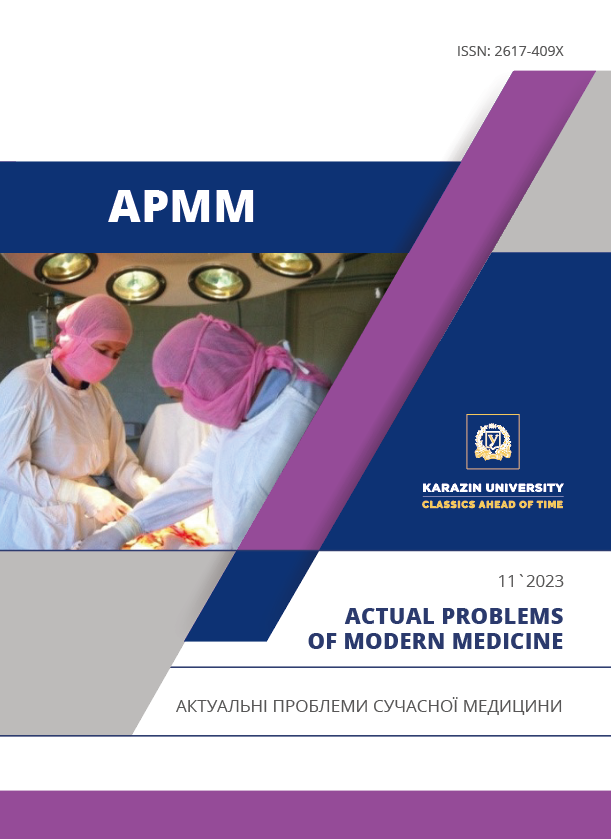Efficiency of using deflu silver nose in patients with acute rhinosinusitis
Abstract
ABSTRACT. Acute rhinosinusitis is one of the most common diseases that affects up to 15% of the world's population every year and can occur at any age. The provisions of EPOS 2020 do not provide for the appointment of antibiotics in acute viral and acute post-viral rhinosinusitis. Thus, there is a need to find medicines to improve the well-being of patients, speed up recovery and prevent complications. One of such promising means of combating viral and bacterial infection of the ENT organs is the use of drugs with silver nanoparticles. Purposes. The purpose of this work was to study the effectiveness of using Deflu Silver Nose in the treatment of patients with acute rhinosinusitis. There was a study of its influence on the clinical course of the disease and parameters of local immunity.Materials and methods. Two groups of patients with acute rhinosinusitis were under our observation. The first group (main) consisted of 32 patients who, together with traditional symptomatic therapy (saline solution intranasally for 2 injections 3 times a day, multivitamins) received the aid Deflu Silver Nose (intranasally for 2 injections 3 times a day for 7 days). The drug was used from the 3rd day after the onset of the disease. The second group (comparison group) consisted of 30 patients who received similar therapy, except for Deflu Silver Nose.Clinical examinations and studies of local immunity were carried out before and after the start of therapy (on the 3rd and 7th day, on the 6th and 10th day of the disease). The results of the examination of 10 healthy people were used as an indicator of the norm. Rhinocytograms (cytological studies of scrapings from the nasal mucosa) were studied.Immunoglobulins, lysozyme, and cationic proteins were carried out in oropharyngeal secretions. Results. Clinical observations showed that under the influence of Deflu Silver Nose, patients with acute rhinosinusitis on the 3rd day from the start of treatment had a noticeable reduction or complete disappearance of the clinical symptoms of the disease. On the 3rd day of treatment, in the rhinocytograms, in the patients of the main group, there was a decrease in the nasal mucosa of destroyed cells and the percentage of lymphocytes in the scraping of cells of the flat and prismatic epithelium. On the 7th day of using Deflu Silver Nose, the level of all antimicrobial factors in nasal secretions in patients of group 1 decreases to normal levels.During this period, the inflammatory process was stopped and excessive swelling of the nasal mucosa was not observed in the vast majority of patients in the main group. No such positive changes were observed in the 2nd group of patients. Conclusion. Intranasal use of Deflu Silver Nose has a positive effect on the clinical course of acute rhinosinusitis, contributes to the prevention of bacterial complications, and increases the local immunoreactivity of the body. Under the influence of the nasal spray, the duration of the disease is reduced and the quality of life of patients improves.
Downloads
References
Rosenfeld RM, Piccirillo JF, Chandrasekhar SS, Brook I, Kumar KA, Kramper M, et al. Clinical practice guideline (update): Adult sinusitis. Otolaryngol Head Neck Surg. 2015 Apr;152(4):598-609. DOI: https://doi.org/10.1177/0194599815574247
Fokkens WJ, Lund VJ, Mullol J, Bachert C, Alobid I, Baroody F, et al. EPOS 2012: European position paper on rhinosinusitis and nasal polyps 2012. A summary for otorhinolaryngologists. Rhinology. 2012 Mar;50(1):1-12. DOI: https://doi.org/10.4193/Rhino50E2
Koskinen A, Numminen J, Markkola A, Karjalainen J, Karstila T, Seppälä M, et al. Diagnostic Accuracy of Symptoms, Endoscopy, and Imaging Signs of Chronic Rhinosinusitis Without Nasal Polyps Compared to Allergic Rhinitis. Am J Rhinol Allergy. 2018 May;32(3):121-131. DOI: https://doi.org/10.1177/1945892418762891
Fokkens WJ, Lund VJ, Hopkins C, Hellings PW, Kern R, Reitsma S, et al. European Position Paper on Rhinosinusitis and Nasal Polyps 2020. Rhinology. 2020. Suppl. 29:1-464. DOI: https://doi.org/org/10.4193/Rhin20.600
Berezhniy VV. Modern Technologies in Rhinosinusitis Treatment in Children (lecture). Modern pediatrics. Ukraine. 2019;4(100):79-87. DOI: https://doi.org/10.15574/SP.2019.100.79
Kharchenko YeI, Lazyuka YuV, Skrotsʹka OI. Otrymannya biohennykh nanochastok sribla z vykorystannyam drizhdzhiv i perspektyvy yikh zastosuvannya u protymikrobniy terapiyi. NUKHT. 2021;3(27):32-42. DOI: https://doi.org/10.24263/2225-2924-2021-27-3-6 [in Ukrainian]
Jeremiah SS, Miyakawa K, Morita T, Yamaoka Y, Ryo A. Potent antiviral effect of silver nanoparticles on SARS-CoV-2. Biochemical and Biophysical Research Communications. 2020;1(533):195—200. DOI: https://doi.org/10.1016/j.bbrc.2020.09.018
Iqtedar M. Extracellular biosynthesis, characterization, optimization of silver nanoparticles (AgNPs) using Bacillus mojavensis BTCB15 and its antimicrobial activity against multidrug resistant pathogens. Prep. Biochem. Biotechnol. 2019;2(49):136—142. DOI: https://doi.org/10.1080/10826068.2018. 1550654
Chernushenko EF, Kohosova LS. Imunolohichni doslidzhennya v klinitsi. K.: Zdorov'ya. 1978. 28 – 29 p. [in Ukrainian]




